All issues

Volume 44, Issue 5
Displaying 1-2 of 2 articles from this issue
- |<
- <
- 1
- >
- >|
-
1975 Volume 44 Issue 5 Pages 359-430
Published: May 05, 1975
Released on J-STAGE: August 05, 2011
JOURNAL FREE ACCESSDownload PDF (25760K) -
Relationship between Martensite Structure and Fracture Morphology of Hydrogen EmbrittlementYoneo Kikuta, Takao Araki, Toshio Kuroda1975 Volume 44 Issue 5 Pages 431-438
Published: May 05, 1975
Released on J-STAGE: August 05, 2011
JOURNAL FREE ACCESSThe three-point bending strength of specimen (martensite structure) with hydrogen and hydrogen free and those fracture morphologies were investigated in relation to the prior austenite grain size, martensite lath size and unit fracture facet by two-stage replica method and E.S.M. The three-point bending test was carried out at room temperature and liquid nitrogen temperature.
The bending strength of specimen with hydrogen depended on prior austenite grain size and these fracture surfaces were observed remarkably secondary cracks along the boundary of martensite lath.
Therefore, the unit fracture facet for hydrogen embrittlement was defined the zone between secondary cracks.
The unit facet size for hydrogen embrittlement was smaller 1/2-1/4 than unit facet size for cleavage fracture of specimen with hydrogen free at -196°C.
The fracture morphologies of hydrogen embrittlement at room temperaturewere different from the fracture morpholpgies at -196°C. At room temperature, the fracture surface of specimen with hydrogen was observed QCHE in 20μ-35μ austenite grain size and intergranular fracture in 105μ-175μ austenite grain size. But, at test temperature -196°C, its surface was observed clearly striation like pattern in every austenite grain size.
These results suggested that the fracture morphologies of hydrogen embrittlement were influenced by hydrogen diffusion and accumulation in lath boundary.View full abstractDownload PDF (5280K)
- |<
- <
- 1
- >
- >|